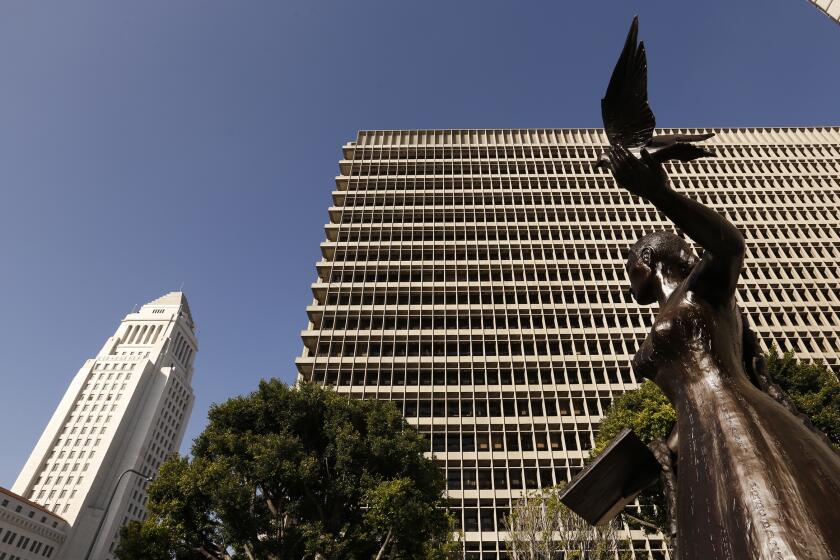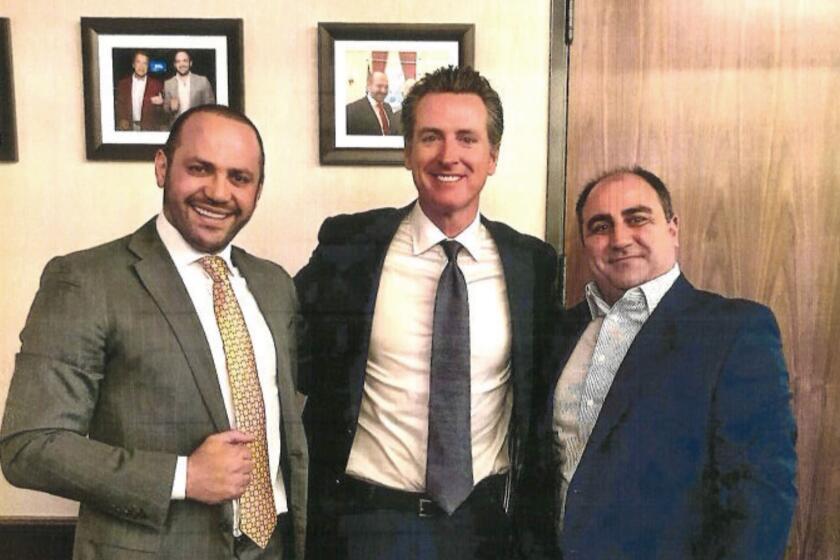Thief who finagled luxury hotel room keys admits to brazen diamond necklace heist
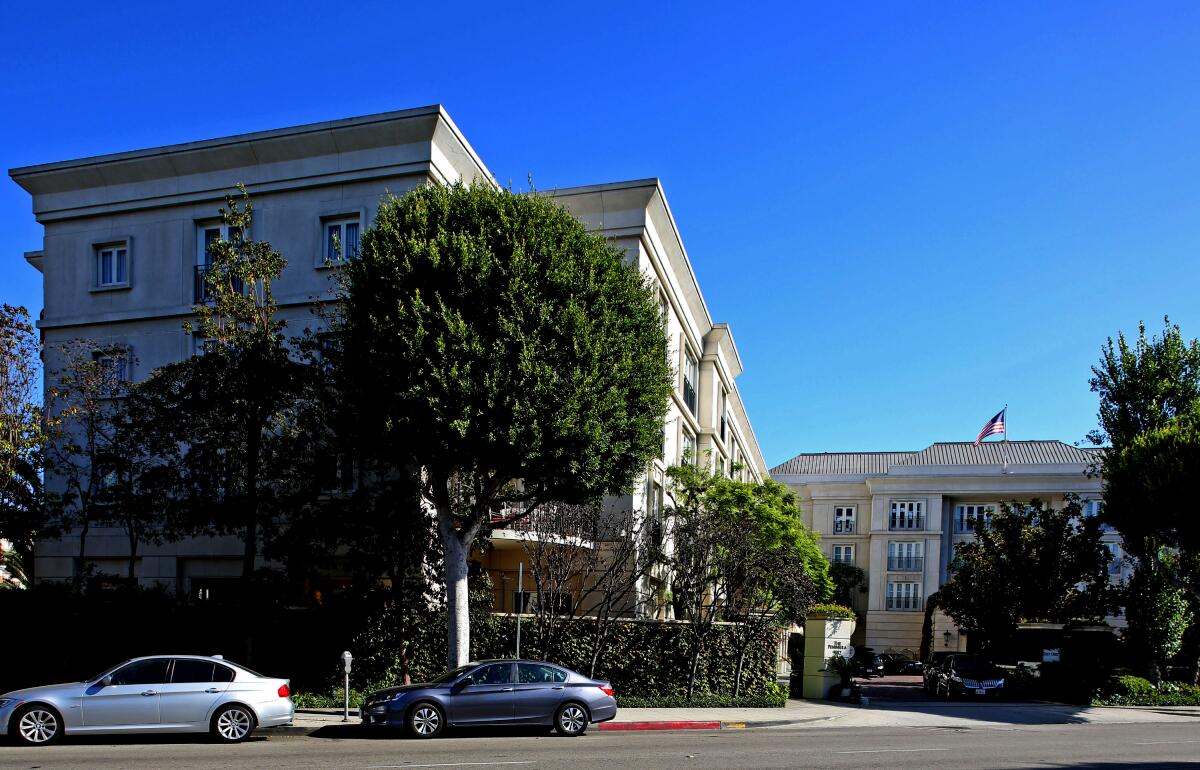
- Share via
A man accused of talking his way past the front desks of posh Beverly Hills hotels and walking off with suitcases full of jewelry, shoes and designer dresses admitted Tuesday that he stole a guest’s diamond necklace valued at $395,000.
Appearing in a federal courtroom in downtown Los Angeles, Jobson Marangoni De Castro pleaded guilty to interstate transportation of stolen property. The tall, slender 38-year-old wore a white jail jumpsuit, his gray hair thinning and his goatee streaked with gray.
The victims, identified in an affidavit only as residents of Brazil, traveled to Los Angeles in May 2023 to attend a fashion event, FBI Special Agent Gary Wallace wrote. They packed jewelry and designer clothes inside their six suitcases, along with several AirTag tracking devices.
Four days after the couple checked into the Peninsula Beverly Hills, De Castro ate dinner at the bar and charged the bill to the couple’s room, Wallace wrote. It’s unclear why De Castro, a Brazilian citizen with legal residency in the United States, singled out the couple, who told the FBI they didn’t know him, the agent said.
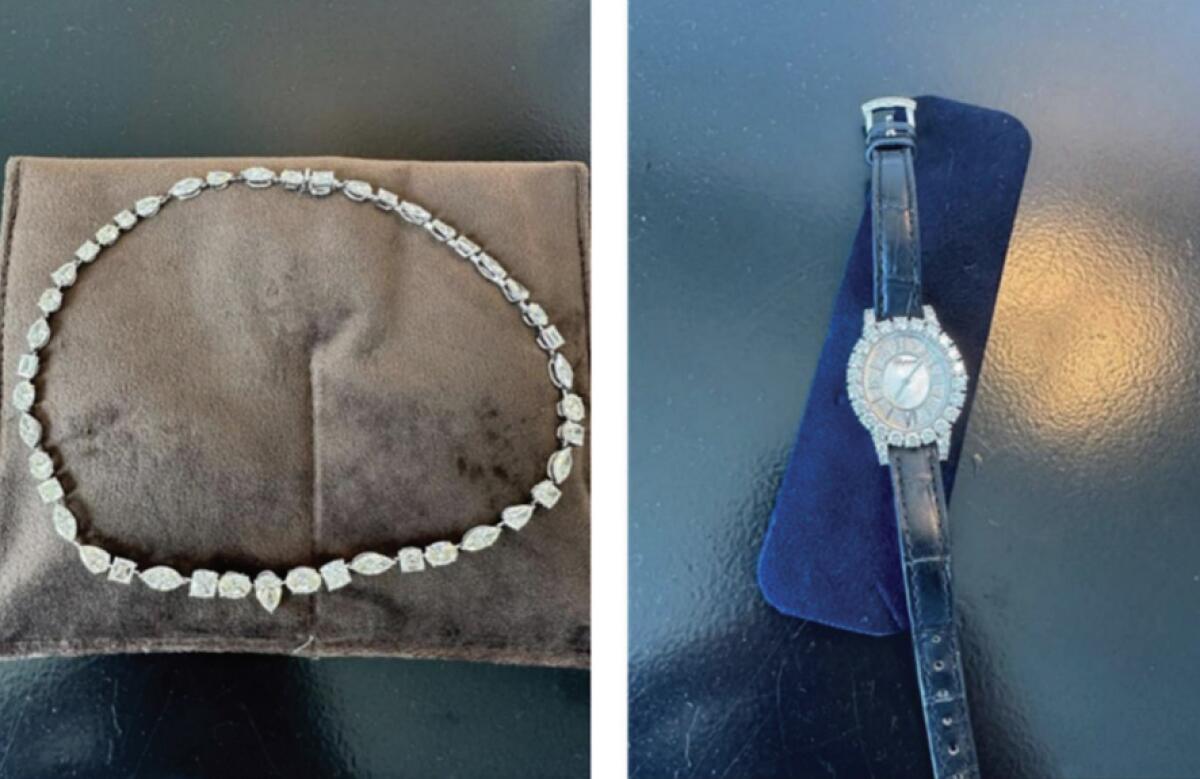
The next day, De Castro returned to the hotel, identified himself to the front desk clerk as a guest and said he’d left his keys in his room, Wallace wrote. After De Castro was able to answer some security questions, the clerk gave him a key to the Brazilian couple’s room.
De Castro unlocked the door but found one of the guests sleeping inside, Wallace wrote. He left the hotel. After the couple went out to dinner, De Castro returned to their room and rolled six suitcases into an elevator, according to the agent. With the help of hotel staff, he loaded the suitcases into an Uber and left in the ride-share car, Wallace wrote.
The couple returned about an hour later and went to the Beverly Hills police, reporting the theft of some $500,000 worth of jewelry and another $300,000 in shoes and clothes, according to the affidavit. Among the pilfered items was a custom-made Flavia Vetorasso diamond necklace, Wallace wrote, and an embroidered white silk Chanel dress.
A month after the theft, the victims’ attorney provided the Beverly Hills police a valuation of the stolen goods, which estimated the loss at nearly $1.5 million. The diamond necklace was valued at $395,000, while a Chopard L’Heure du Diamant watch was appraised at $89,400, Wallace wrote.
Beverly Hills police traced two AirTags in the couple’s luggage to a Rodeo Drive address across the street from the apartment complex where De Castro lived, according to the agent.
Two days after the suitcases went missing, De Castro flew to Miami, where he contacted a jewelry seller on Instagram and offered to sell a diamond necklace and watch, Wallace wrote. In an Instagram message, De Castro said he didn’t have papers for the jewelry, which he claimed belonged to his late mother.
Authorities still have not identified a shooter in the 2013 killing of Rigoberto Dupre at a South L.A. auto repair shop, but prosecutors allege an associate had orchestrated it over a real estate scam that netted $375,000 in gold coins.
Wallace compared the photos De Castro sent to the seller to those provided by the victims’ attorney and concluded they were the Flavia Vetorasso necklace and the Chopard L’Heure du Diamant watch.
De Castro sold one of the pieces — it is not clear in the affidavit whether it was the necklace or the watch — for $50,000, Wallace wrote. De Castro thanked the seller afterward, writing, “I will definitely recommend. I’m very happy.”
In his guilty plea, De Castro admitted that he transported “jewelry including a diamond necklace” across state lines knowing it was stolen. He did not plead guilty to another theft outlined in Wallace’s affidavit.
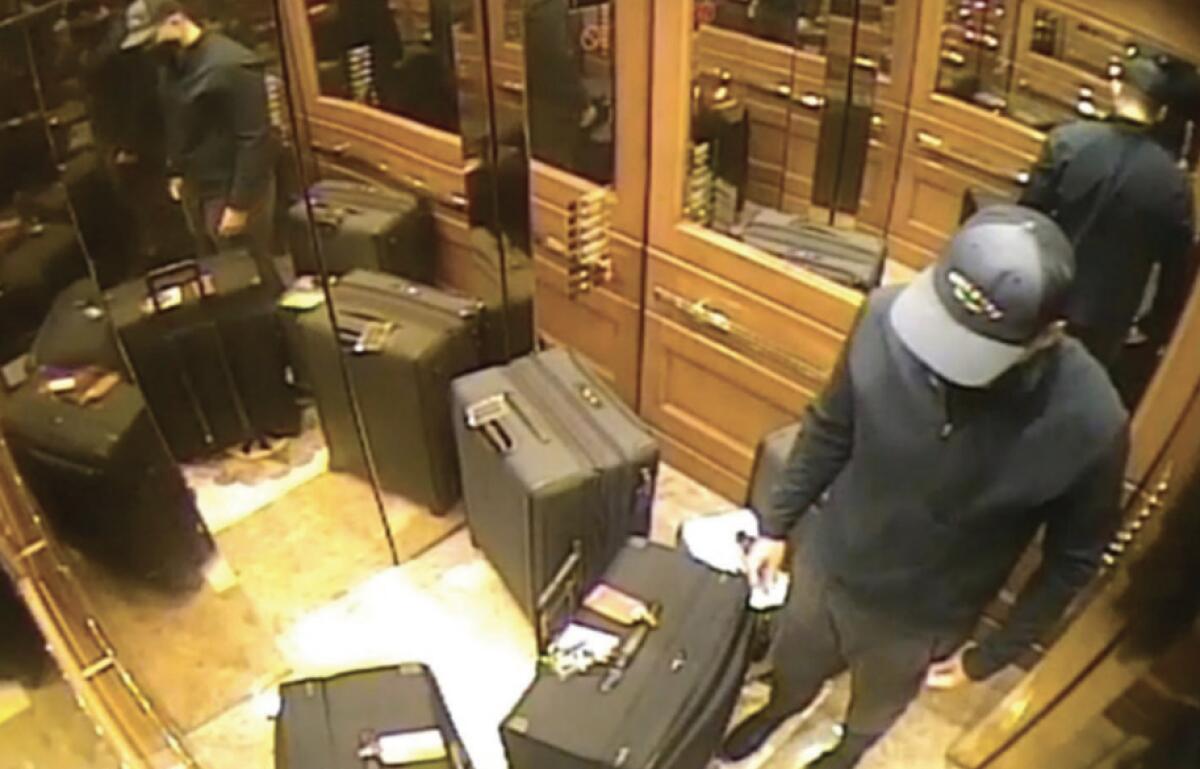
Two weeks before he wheeled the suitcases out of the Peninsula Beverly Hills, De Castro met a couple at the pool of the Beverly Wilshire Hotel. The husband exchanged phone numbers and Instagram handles with De Castro, and told him they were staying in room 589, Wallace wrote.
De Castro asked the man if he had dinner plans. When the man said he had a reservation at a restaurant, De Castro told him it would be safer to leave his valuables behind in his room, Wallace wrote. The man found this odd — the restaurant was in a safe area — but he and his wife locked their jewelry, passports and cash in the room safe before going to dinner, according to the affidavit.
Citing surveillance footage, Wallace wrote that De Castro talked a clerk into giving him a key to room 589 and was seen, 30 minutes later, walking out of the lobby with suitcases belonging to the couple.
The couple returned that evening to find the safe and closets of their room empty, their belongings gone, Wallace wrote. They estimated losing $36,000 in jewelry and $3,000 in cash.
Edgar Sargsyan, who presented himself as the right hand of an Armenian crime figure, was sentenced to six months after testifying against his former mentor and others.
De Castro was arrested by the FBI in August. His lawyers asked a judge to release him on bail, writing in court papers that he had no criminal history and had never been arrested until this case. He had no desire to return to Brazil, they wrote, which he fled nearly 20 years ago “for fear of prosecution based on his sexual orientation.”
De Castro’s mother — who, contrary to her son’s message to the Miami jewelry dealer, is still very much alive — offered to post a surety bond to secure his release.
Unpersuaded, a judge ordered De Castro jailed. He faces up to 10 years in prison when he is sentenced.
U.S. District Court Judge Hernán D. Vera scheduled a hearing April 30 to resolve a dispute between De Castro’s attorney and prosecutors over the value of the stolen jewelry, which could affect his sentence or any restitution amount.
De Castro’s lawyer, Annick Jordan, declined to comment.
More to Read
Sign up for Essential California
The most important California stories and recommendations in your inbox every morning.
You may occasionally receive promotional content from the Los Angeles Times.
